Your baby having their own crib is a great thing. You and your partner get to continue sleeping in your own bed while your baby gets a sense of independence.
It’s possible for parents to allow their newborns to sleep in their own cribs right from the start or transfer them later on. Some parents don’t put their baby in a crib at all and allow them to co-sleep with mom and dad.
If your baby does have a crib, at some point, you’re likely to walk in on your baby chewing on the rail of the crib.
This might seem strange, especially when you see a mouth full of tiny teeth, paint chips, and possibly some splintered wood in all the extra saliva.
You might freak out a little bit when they see this, wondering if your baby could possibly choke on the bits that break apart from the chewing episode.
Many parents of teething toddlers have been through this exact situation, so don’t worry – all the questions will be covered in this article if your new to this sort of thing.
Why Do Babies Chew on their Crib in the First Place?
Parents can easily understand why their baby would chew on something like their fist, or a shirt collar, or even the car seat straps during a drive. But when they see their baby chewing on their crib rail It’s another ordeal entirely to try and understand why it’s happening. It can be confusing why a baby would want to chew on a metal or wood crib rail instead of their teething toy.
And if the paint begins chipping off of the crib rail, it can be frightening for the parent, and it can be potentially dangerous for a baby to have paint chips in their mouth.
Even if the crib in your home isn’t painted or stained with wood stain, it could make you question whether your baby will be safe if they keep chewing on their crib. Maybe you need to intervene before they choke on paint chips?
To take the appropriate action, you’ll need to understand why a baby might chew on their crib in the first place, so you help them stop doing it more easily.
Teething babies love to chew on just about anything, but especially the crib rail
If your baby is in the teething phase, the crib won’t be the only thing you catch them chewing on.. Babies who have new teeth growing in, end up chewing on just about everything they can get their hands on. It helps them soothe the sore gums that go along with teething.
Teething gums can be itchy and sore for your baby, and it gives them relief from this if they chew on the crib railing.
If you’ve ever had your wisdom teeth grow in as an adult, you probably recall how tender your gums were as they broke through the surface. Gums can swell up to a painful amount when teeth begin breaking through the surface of the gum, that might be a reason your baby is chewing on the side of their crib.
View in gallery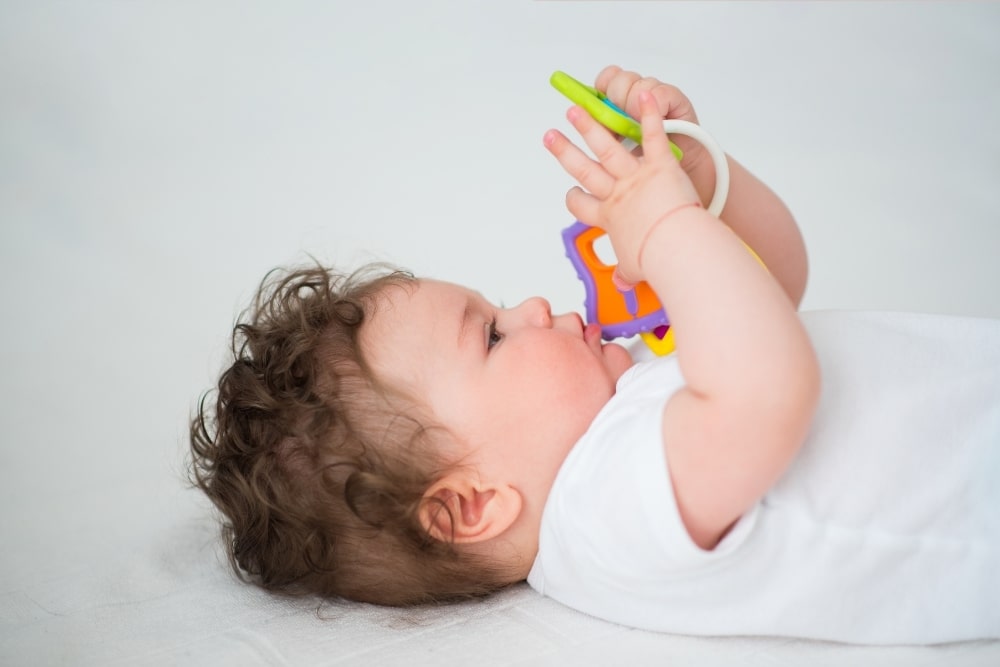
To correct this offer a teething toy to your baby in their crib
If you suspect that your baby is chewing on the crib due to teething pain, you can offer a variety of teething toys they get to keep in their crib. Baby companies make a huge variety of teething toys that you can offer your baby. Parents love wooden bead necklaces, and flexible plastic chew toys.
If your baby ends up having an all-time favorite teething toy, they will likely shy away from chewing on their crib as often if they get to have it in their crib too. Keep offering it to your baby each time they chew on their crib rail.
[amalinkspro type=”showcase” asin=”B07KWTS2FH” apilink=”https://www.amazon.com/dp/B07KWTS2FH?tag=mominformedcom-20&linkCode=osi&th=1&psc=1″ new-window=”true” addtocart=”false” nofollow=”true” sc-id=”4″ imgs=”LargeImage” link-imgs=”false” specs=”Babys Safety is Our Top Priority – This baby teething toy is made of food-grade silicone. We are committed to focusing on the HEALTHY development and HAPPINESS of your baby.~~~Pain & Gum Soreness Relief – Our infant teething keys are designed to soothe, massage, and reduce fussiness & discomfort. It’s going to relieve your child’s teething pains. Different shapes of products have different textures. The pliable beads and bumps design will help them relieve teething discomfort.” btn-color=”#ff9900″ btn-text=”Buy on Amazon” alignment=”aligncenter” hide-prime=”0″ hide-image=”0″ hide-price=”0″ hide-button=”0″ width=”750″]Teething Toys[/amalinkspro]
If your baby finds a favorite teething toy, they will likely shy away from chewing on their crib as often.
Anxiety is another reason your baby might chew on the crib rail
One thing that causes babies to excessively chew is anxiety. If this is the case for your baby, you might notice them chewing on other things too. To diagnose anxiety in your baby pay attention to how often they are chewing, it’ll be happening all the time if they have anxiety.
Babies who experience anxiety might be crying more often than usual, biting on the rail of their crib, and breathing quite rapidly when you come into the room. If your baby is old enough to respond to your questions, you can ask how they are feeling.
If they are too young to respond to questions yet, it’s still a good idea to prepare your baby for good communication with you, you can present a set of familiar questions when they seem to have about of anxiety.
If your baby does have anxiety their appetite will begin to drop or increase noticeably at the same time as increased chewing in their behavior. Very small babies who have anxiety might want to suckle on their mother’s breast for comfort through an anxiety attack.
Comfort your baby when they have anxiety by rocking them more often
Babies love to be swaddled and cuddled by their loved ones when they have anxiety. If you notice that your baby is having anxiety, you can wrap him in a swaddling blanket – this is especially effective when they’re still a newborn up to a few months old.
If they’re a bit older and have anxiety, they probably won’t want to be swaddled – and will more likely find comfort in you rocking or holding them close.
Since babies with anxiety bite and chew on things more often, you can also offer teething toys while rocking them.
There are also natural medicines like Gripe Water at the local grocery store that help soothe anxiety in babies. Look in the natural section of the grocery store to see if there’s some kind of medicine that can help soothe your baby’s anxiety.
There’s a disorder called Sensory Integration Disorder that causes crib chewing
Sensory integration disorder is when the nervous system of a baby processes stimulation in an unusual way. Babies who have this disorder become overstimulated or under-stimulated more often than a baby without this sensory integration disorder.
One of the symptoms of sensory integration disorder is a baby who constantly wants to move- because they want to move at all times they end up chewing in their crib.
View in gallery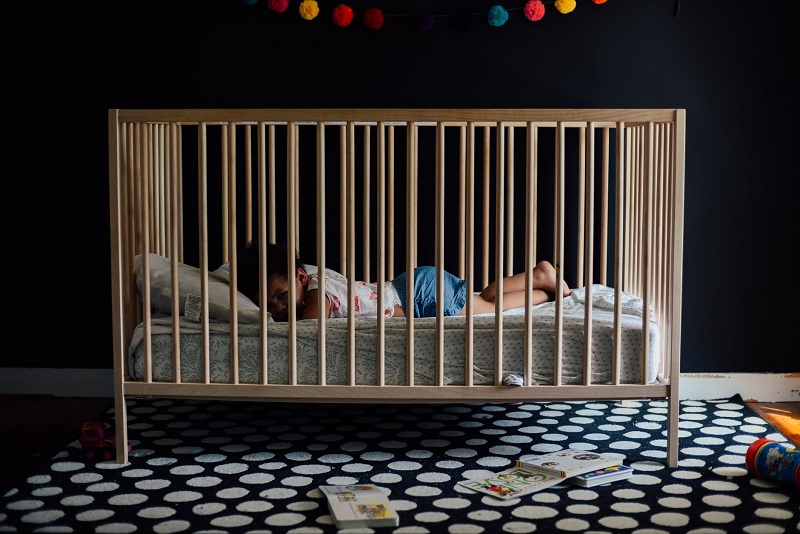
An older baby who has sensory integration disorder might use the crib rail to release the intense urges to chew, or they might even begin chewing on other items around the house like clothing or furniture.
In the instance of crib chewing, a baby with sensory integration disorder might not realize that the crib is hard, causing them to do it anyway. This is because the texture of the crib is less obvious to the baby.
Babies with sensory integration disorder will need protection on their crib railing so they don’t harm themselves or the crib rail from overly chewing on it.
If I let My baby Chew On the Crib is it Harmful?
Well, it depends on who you ask, there are two sides to this argument. Let’s see what both sides have to say about whether it’s dangerous or not for your baby to chew on their crib.
Some parents will say it’s a completely harmless habit that babies grow out of in due time. Google seems to support that idea – if you use google to search whether or not it’s dangerous for your baby to chew on the crib it will say that it’s harmless for babies to do so.
On the other side of the argument, many health-conscious parents will tell you that it can be dangerous for your baby to chew on their crib. They stand behind it being dangerous for various reasons like; wood breaking down, chemicals in the stain, and the paint possibly chipping off.
One side of the argument is that babies need something to chew on so let them
Some parents and many experts will tell you it’s completely harmless to let your baby chew on their crib. The argument is that babies chew on just about everything anyway, and it’s harmless because their immune system is strong. They feel it’s a completely harmless habit that children eventually grow out of.
It makes sense to think this way, because all children do go through this stage, putting everything into their mouths so why stress.
If you feel this side of the argument is suitable for your family, you can go on and allow your baby to chew on their crib without stressing about it harming them. It certainly won’t put your baby into any immediate danger by allowing them to chew on the crib rails – unless there are big splinters of wood chipping off that they could choke on.
Here’s why some parents say crib chewing is a no-go for their household
On the other hand, there are some reasons that all parents should be mindful of when it comes to crib chewing.
Chemicals from wood stain: Some wooden cribs are finished with a wood stain to make the wood look more appealing in the end. It’s common for this stain to be smothered onto all wooden cribs these day’s – the potential harm comes into parents minds due to the chemicals in wood stain. Your baby can have a bad reaction from the wood stain.
Allergic reactions that are more obvious can happen to babies if they come into contact with the chemicals in household cleaning products. You wouldn’t knowingly want your baby to get a hold of these cleaning products for that reason. Just like you don’t want your baby to come into contact with chemicals that have been applied to their crib.
Babies can have an allergic reaction from the chemicals in wood stain right away, or over time.
View in gallery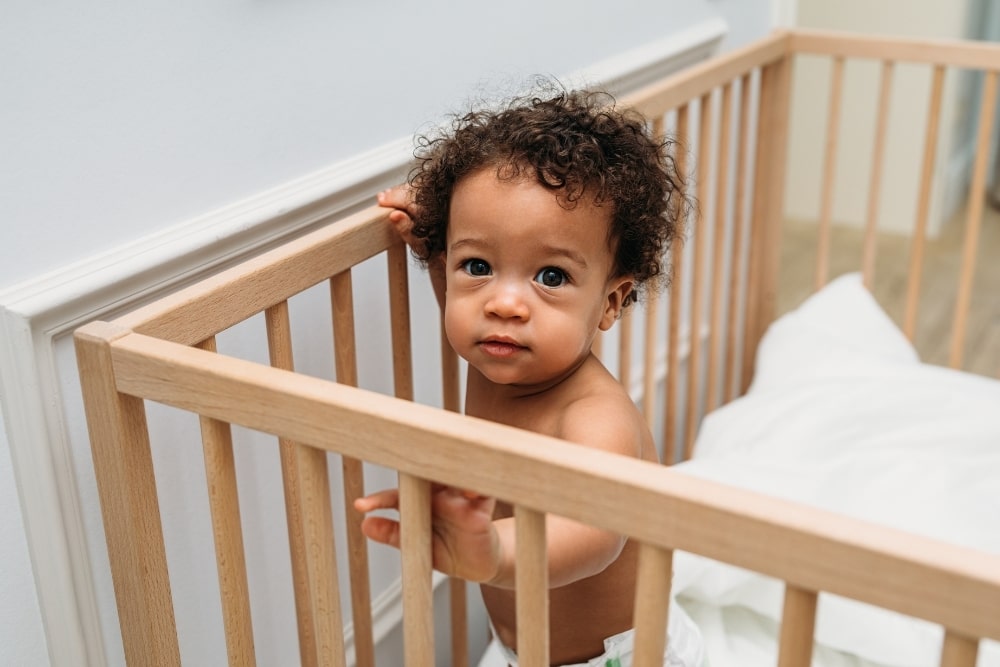
Splinters from the wood: The wood of the crib eventually breaks down when it’s chewed on, which could result in splinters lodging into your baby’s gums.
These splinters can be painful, or cause infections in your baby’s mouth. Plus, as the wood begins to splinter away, the chunks of wood can potentially get lodged in the bronchial tubes that allow airflow to your baby’s lungs. It doesn’t take much to block the tiny airway of a young child.
How to Choose the Best Crib Cover for Your Baby
If your baby tends to chew on the crib, it can become an issue for a variety of reasons. The nice thing about the baby industry in 2020 is that there is protective equipment readily available for every type of situation a parent can fathom.
Crib chewing is something that many parents will have to endure. Thankfully, there are numerous crib rail coverings for you to choose from.
Why do you need to use a crib rail cover?
If your baby is going through the hardships of teething or any of the other phases listed above that cause chewing you’ll want to invest in a crib rail cover. The reasons we mentioned earlier in this article are the most common reasons that chewing on the crib might be appealing to your baby right now.
When your baby is chewing on the crib often to soothe their gums, you’ll want to purchase a crib rail cover to keep your baby safe from splinters and chemicals in the wood stain.
By having a crib rail cover for the protection you won’t have to throw out your crib earlier than necessary.
Purchase a crib rail cover right when you notice your baby has been chewing on the crib
A crib rail cover is one of those things that you won’t get the most out of if you hold off on getting one. That’s why you’ll want to invest in one right when you notice your baby has been chewing on the crib – by doing it this way you get the most benefit out of the product for your money spent.
It’s true that babies will eventually outgrow this phase altogether – some faster than others – it makes life a lot easier when you don’t have to stress out about the potential consequences of what your baby is chewing on.
[amalinkspro type=”showcase” asin=”B081G92XTS” apilink=”https://www.amazon.com/dp/B081G92XTS?tag=mominformedcom-20&linkCode=osi&th=1&psc=1″ new-window=”true” addtocart=”false” nofollow=”true” sc-id=”4″ imgs=”LargeImage” link-imgs=”false” specs=”High Quality: Our crib rail cover is made of 100% microfiber polyester which softer and smoother than other fabric. EXQ unique sewing technology effectively reduces the problem of edging burst, High-thread fabrics eliminate the trouble of leakage of the filling. Designed for toddlers delicate skin, it is breathable and durable, so that childen could enjoy a sweet and comfortable dream.~~~Install Easily: Measuring 27.5 long x 7 wide for short pieces and 51 long x 7 wide for long piece,our covers fit rails up to 8 inch around. Loop one string through a hole in the cover and another string around the bottom,then double knot them together to make sure it doesnt fall make the product more consistent with your crib.” btn-color=”#ff9900″ btn-text=”Buy on Amazon” alignment=”aligncenter” hide-prime=”0″ hide-image=”0″ hide-price=”0″ hide-button=”0″ width=”750″]EXQ Home 3-Piece Baby Crib Rail Cover Set for 1 Front Rail and 2 Side Rails,Safe Kids Padded Crib Rail Protector from Chewing for Standard Cribs,Soft Batting Inner for Baby Teething Guard(Grey)[/amalinkspro]
What Type of Crib Rail Cover is Best for your family?
Now that you understand why you might need a crib rail cover, the next question is what type to buy. Since there are a few main types parents love, we’ll go over the benefits of each one.
View in gallery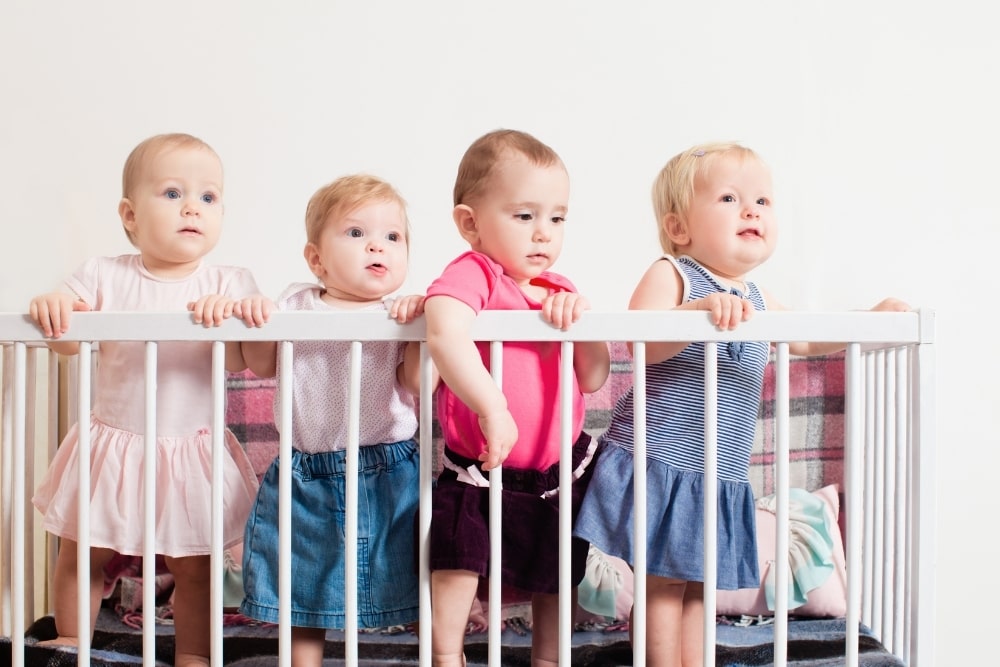
Option number one: A fabric crib rail covering
A crib rail covering made out of fabric is suitable for all types of cribs – fabric is the most versatile type. They’re best for uneven edges and bumpy rails. If you have an older styled crib or chose a fancy one with unique textures, a cloth cover will be a great choice for you.
Fabric covers are common amongst the parenting community, so you can always get a few of them as backups if you’d like to.
Backups make it easy on wash day, your baby can still have the protection from the rail covering during their naptime. Fabric coverings are the most popular type of crib rail cover amongst parents, probably because they are so easy to set in the proper place inside the crib.
[amalinkspro type=”showcase” asin=”B07L5GWZ1R” apilink=”https://www.amazon.com/dp/B07L5GWZ1R?tag=mominformedcom-20&linkCode=osi&th=1&psc=1″ new-window=”true” addtocart=”false” nofollow=”true” sc-id=”4″ imgs=”LargeImage” link-imgs=”false” specs=”ECO-FRIENDLY PRINTED. Free of PVC, Lead, Phthalate or BPA. Certified by CPSIA, our rail covers are totally safe to young baby(s) – 100% Silky Soft Microfiber Fabric~~~Measuring 51”x7” and 27.5”x7”, our covers fit rails up to 8 inch around. Measure 4 inch width around when folded. Extra wider than other competitors’. A MUST-HAVE for your expensive crib(s)~~~~~~” btn-color=”#ff9900″ btn-text=”Buy on Amazon” alignment=”aligncenter” hide-prime=”0″ hide-image=”0″ hide-price=”0″ hide-button=”0″ width=”750″]TILLYOU 3-Piece Padded Baby Crib Rail Cover Protector Set from Chewing[/amalinkspro]
If you choose a fabric crib rail covering follow the specific wash instructions
Parents who opt for cloth covers must follow the specific care instructions for their rail covering, this will help it last the proper amount of time. If a fabric covering is put in the dryer at high heat – and the ribbons on the seams can’t withstand that type of heat – thus the crib rail covering will be ruined.
When using cloth covering, you basically secure the covering with the fabric straps connected to the covering, the straps are sometimes made out of ribbon, cloth, or velcro. These secure help keep the rail covering in place.
Fabric crib rail coverings are most known for absorbing drool
Drool easily absorbs into cloth coverings which is one reason why they are the most popular in the baby community. Teething babies drool a lot, and with other styles of coverings like rubber, the drool will end up on your baby’s clothes, a bib, or the floor.
Having a fabric covering makes it easy to do just one big clean sweep of the nursery, put all the dirty laundry, sheets, coverings, and bibs in one big load.
Option number two: Plastic rail coverings
One nice thing about using a plastic rail covering is the way it’s so easy to clean. You can place your baby in the crib after a meal, and wipe the covering clean of any mess quite easily.
If you have germophobia and you tend to worry about keeping germs out of the baby’s room completely – a plastic rail covering is best for your family. Or if you don’t have a washing machine in your home, a plastic crib rail covering is ideal for you since you can wipe it clean with a rag daily.
One downside to having a plastic crib rail covering is that the drool will probably spill onto the floor or the mattress so you’ll need to consider placing towels in your baby’s crib to absorb the drool that spills.
A plastic crib railing cover is subtle enough to help show off your unique crib
Many parents like to use a plastic crib rail covering because it’s so subtle, unlike a cloth covering that draws that is designed to draw attention toward it with unique designs.
If your crib is unique in itself, and you’d like for it to stand out and be seen, you should opt for a plastic covering to keep attention on the beautiful crib you’ve invested in.
If your baby is a little Houdini and likes to remove anything he can, you can secure the rail cover with plastic zip ties. The extra security of the covering will help families who have kids that like to undo additions to their crib by themselves.
Option number three: Rubber crib rail covering
A rubber crib rail cover is a lot softer than a plastic version, which makes a rubber covering more ideal for an extra-sensitive baby. If your baby messes with the crib rail covering often, then a rubber one will offer more protection than a plastic one will, since it holds in place a lot better than fabric or plastic coverings do.
[amalinkspro type=”showcase” asin=”B00YG22JXO” apilink=”https://www.amazon.com/dp/B00YG22JXO?tag=mominformedcom-20&linkCode=osi&th=1&psc=1″ new-window=”true” addtocart=”false” nofollow=”true” sc-id=”4″ imgs=”LargeImage” link-imgs=”false” specs=”Protects your babys teeth and soothes tender gums~~~Prevents your little one from ingesting harmful varnish~~~Naturally gummy and tacky material easily slips over your crib rail to protect your babys teeth from hard rail edges~~~” btn-color=”#ff9900″ btn-text=”Buy on Amazon” alignment=”aligncenter” hide-prime=”0″ hide-image=”0″ hide-price=”0″ hide-button=”0″ width=”750″]Prince Lionheart Crib Rail Protector[/amalinkspro]
You can still wipe a rubber covering clean just as easily as a plastic one, but rubber allows your baby to chew on the railing pretty easily since it adheres to the rail.
You know that sticky gunk that gets left behind when you remove a sticker from a window? That same thing happens when you try to remove a plastic rail covering from the crib – just be prepared to remove that gunk if you plan on selling your crib after you’re done with it.
Other Things to Think About When Purchasing a Crib Rail Covering
Now that we’ve covered the common basics of a crib rail covering, let’s go over a few other things you might want to think about before purchasing one.
Do you want the crib rail to match the nursery?
When you designed the nursery you might have had a certain color theme or style in mind that you wanted to stick with. If sticking to that theme matters to you, keep it in mind when you invest in a crib rail cover.
Try to correlate the rail cover with your nursery if this makes a difference to you, you’re the one who goes in your baby’s room everyday – choose a cover that is visually appealing to you.
What type of closure and installation methods do you prefer to use on your crib?
There are a variety of different closure types, there are; ribbons, velcros, and snap closures. Be sure to check out the different kinds you might have to use before you invest in one.
You will be the one dealing with installation, cleaning, and removing the crib rail covering – ensure you are prepared for the requirements it uses for caring for it.
If you already know that you won’t want to remove a bunch of sticky gunk after you remove the rail cover, don’t opt for the rubber rail cover. It’ll matter if you properly remove a rubber rail covering if you plan to sell the crib after you’re done with it. It’s unlikely another family would want to reuse a cover that your baby has already chewed on.
Does your baby chew on the upper or lower rail of the crib?
A crib has multiple rails on it, there are rails on the upper rim, lower rim, and then there are the bars holding it up that babies end up chewing on. Buy a rail cover that properly fits your crib, thoroughly check which rail or rod does your baby chew on?
Look all around the entire crib for teeth marks, on each of the bars and rails to see what your little one has been chewing on.
View in gallery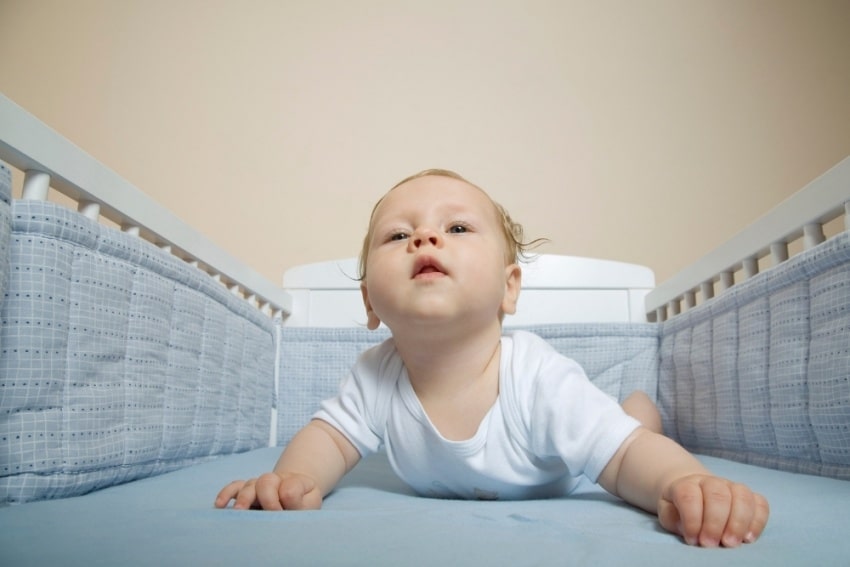
Does the crib rail cover hang lower than you’d like it to?
If your baby likes to look out a window or out into the nursery don’t choose a rail cover that hangs too low to block your baby’s view.
Babies take note of their surroundings as they grow older. It might make them feel trapped if their favorite view is taken away from them.
Babies who are quite sensitive to their surroundings become especially sensitive inside their crib. If you just got your baby used to their crib, you don’t want to risk them changing if they like their crib or not.
In Conclusion
When your baby starts to chew on the crib rail, it’ll probably be obvious when you see their teeth marks or maybe you actually catch them in action chewing on it. As soon as they start making it a habit to chew on the rail, you might want to consider buying a cover to protect your baby from the crib.
You also need to protect the crib from your baby, cribs are a hefty investment for families. And you may want to use it for your future children or to sell it after your baby is completely done using it.
This is when a crib rail cover comes in handy, but on the other hand, some parents feel that could be completely unnecessary to stop their baby from chewing on the crib.
If you don’t feel that your baby is in harm’s way, you don’t have to do anything about it. Many pediatricians say that crib chewing is totally harmless. Ultimately, it’s up to you to choose what you would like to do once your baby starts chewing on the crib.
If you decide that your baby will outgrow this phase soon enough, leave your baby to chew on it. Be sure to randomly check for splinters, and research what kind of wood stain is used on the crib, to ensure your child is safe from any harmful chemicals.




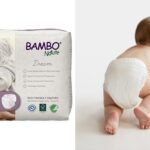

![Today's Kids Play Yard Alternatives For [year]](https://cdn.mominformed.com/wp-content/uploads/2021/07/Beautiful-little-baby-girl-sitting-inside-playpen-150x150.jpg)